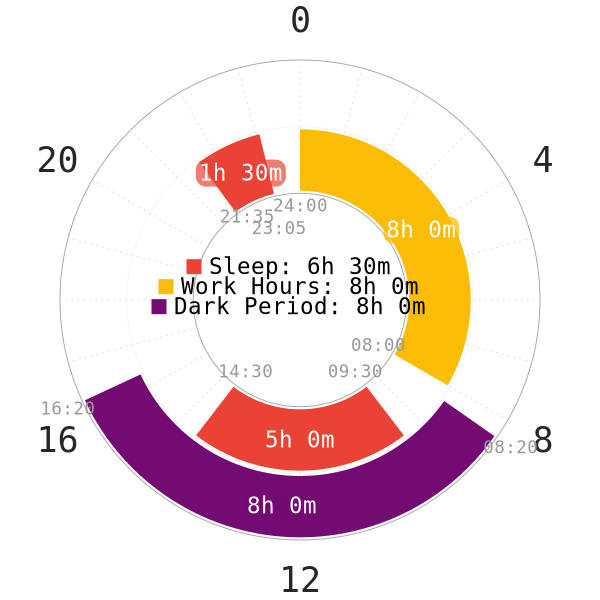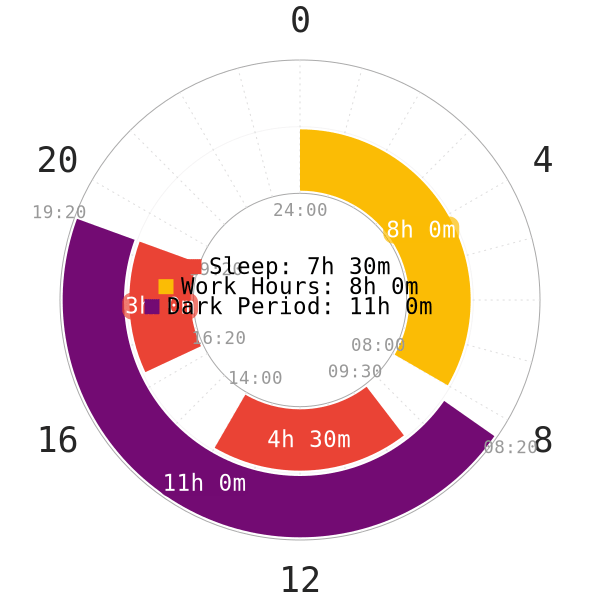Introduction
The third shift is often notorious for a circadian flipper. As a result, there are many dangerous factors that dance around working rather than sleeping at these hours. To start off, the third shift usually runs from midnight to 8 AM. This is undoubtedly the most difficult of the three shifts to pull off. However, depending on the break times, transportation times, etc. polyphasic sleeping may still be possible.
Many polyphasic sleepers have been, or are working third shifts. It is also very common to observe adaptations that are much harder than usual. Even though there is overall quite a small hope, this post will detail certain possibilities and cautions that can assist with your need for a polyphasic schedule.
Polyphasic Schedules for Third Shift
Overview
The holistic scheduling strategies will deviate a bit from a standard schedule as the first note.
- A shift in circadian rhythm would, therefore, be necessary.
- The SWS core would need to be either before or after the shift. Placing it before the shift is generally easier since the circadian rhythm does not need to change as much.
- Your dark period duration should still be as long as when you work a normal first shift or so.
- Most polyphasic schedules will have the suffix “–flipped” after their name because of the flipped circadian rhythm. For example, Siesta-flipped, E2-flipped.
- Napping during graveyard hours, which coincide with work hours, does not have a great outlook. This is because of the high likelihood to run into SWS-filled naps. Likewise, affording a core sleep during work hours is pretty much impossible for the vast majority of work environments.
Anchor Sleep
The importance of an anchor sleep is not stressed enough. In fact, there has been certain applications of it in the context of polyphasic sleeping. Dr. Claudio Stampi has stated the usage of anchor sleep to prevent circadian desynchronization1. However, this concept only applies to third shift because our own body clock needs an anchor to hold on to the new sleep habits. On the other hand, our normal nocturnal sleep already has an “anchored” core sleep every night.
Specifically, you would need an always stationary core sleep of at least 4 hours long every day of the week. This means that you will always sleep after work even on days off, not flipping your circadian rhythm back to nocturnal sleep.
Because adaptation success is so low for third shift, it is unknown if the anchored core sleep can ever be flexible even after adaptation.
Biphasic Sleep


- Biphasic sleep, as usual, seems the most convenient to schedule in more dire situations like third shift. This is because you only need to sleep twice a day, while avoid having to nap at work.
- The usual success we see is that workers would place their sleep before heading out to work.
- However, because the sleep placement is going to be in the previous SWS peak (9 PM-midnight), longer sleep is favored. As such, core sleeps in the multiples of 90m are better choices. This is also a reason why Everyman 1 is not as strong a favorite for third shift as Siesta and Segmented sleep.
- Note that even though Biphasic schedules are the most compelling candidates, success rate with them under third shift is still very low. This takes into account of non-reducing scheduling variants as well.
Everyman Sleep & Other Schedule Groups
Over years, the community has reported very little success with anything but Biphasic for third shift. This likely has to do with the complicated sleep repartitioning as a result of a flipped body clock.
Furthermore, maintaining a dark period on these schedules is even more cumbersome for social time in the day. The reduced sleep totals, in addition, does not help much but steeply increase adaptation difficulty.
Other Health Cautions
As a side note, having such a third shift or “graveyard” work schedule long term has shown several systemic diseases.
- Shift work disorder, which is related to an increased risk of gastrointestinal problems, cancer, depression, heart disease, excessive sleepiness, accidents, and decreased productivity2.
- Multiple other problems include sleep deprivation, decreased cognitive performance, increased human errors, and fatigue3. Chronic sleep deprivation is also a byproduct of shift work4.
These risks are present regardless of your sleep patterns; thus, long-term exposure to third shift may put you ahead of the healthy population with elevated health risks as mentioned.
Main author: Crimson & GeneralNguyen
Page last updated: 30 March 2021
Reference
- Stampi, Claudio. Why We Nap : Evolution, Chronobiology, and Functions of Polyphasic and Ultrashort Sleep. Birkhauser, 2014.
- Roth T. Shift work disorder: overview and diagnosis. J Clin Psychiatry. 2012;73(3):e09. [PubMed]
- Kazemi R, Motamedzade M, Golmohammadi R, Mokarami H, Hemmatjo R, Heidarimoghadam R. Field Study of Effects of Night Shifts on Cognitive Performance, Salivary Melatonin, and Sleep. S. 2018;9(2):203-209. doi:10.1016/j.shaw.2017.07.007. [PubMed]
- Rogers A, Hughes R. The Effects of Fatigue and Sleepiness on Nurse Performance and Patient Safety. Advances in Patient Safety. April 2008. [PubMed]
